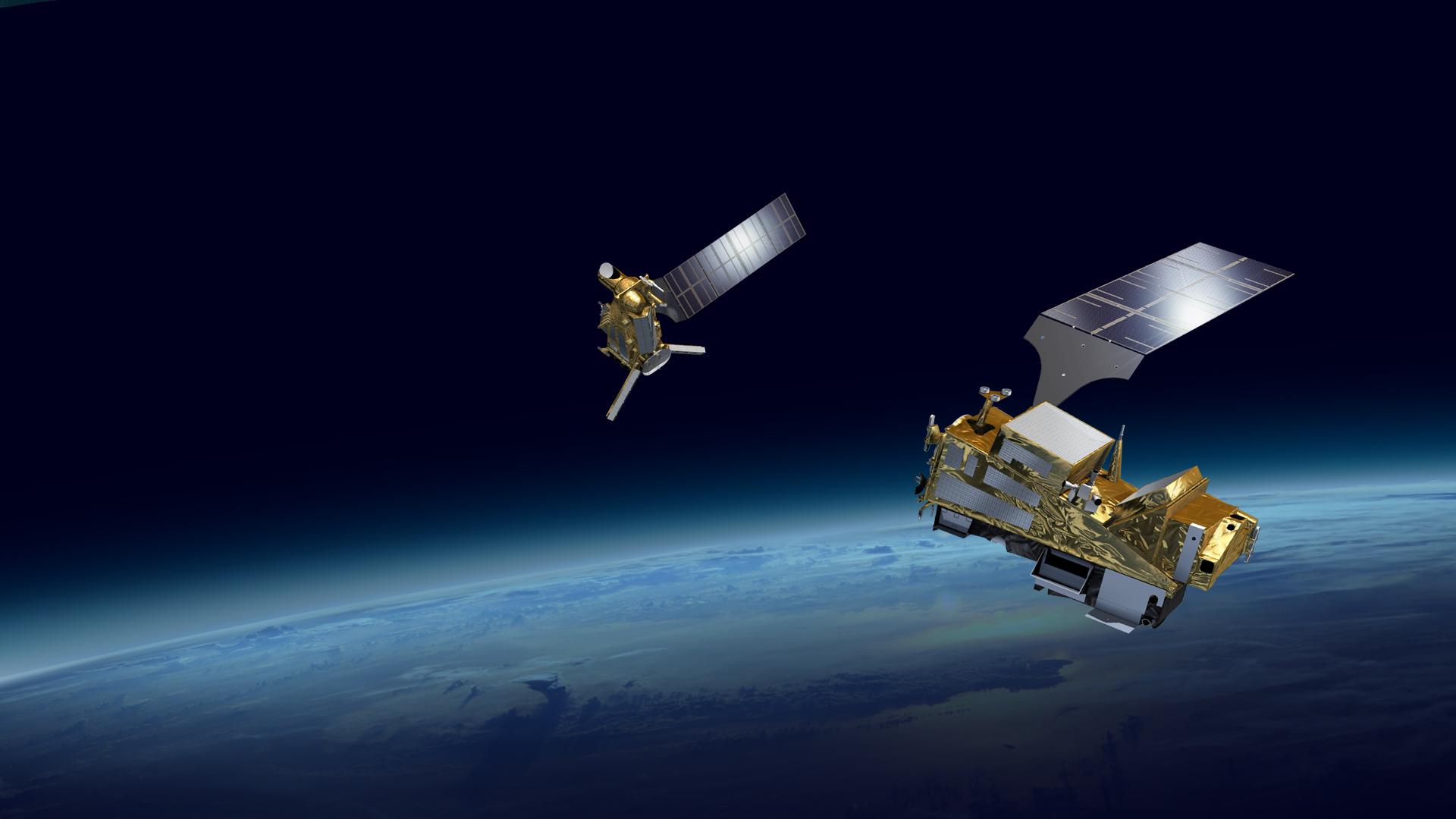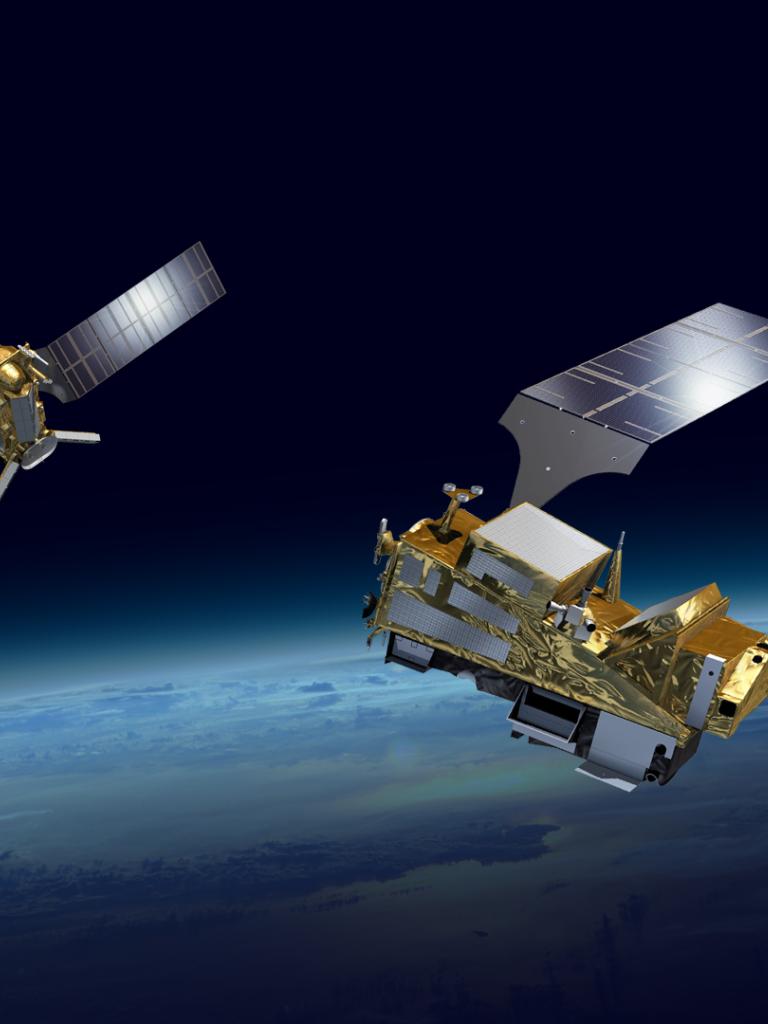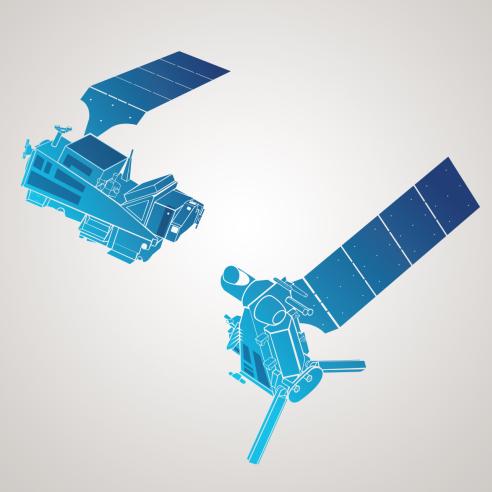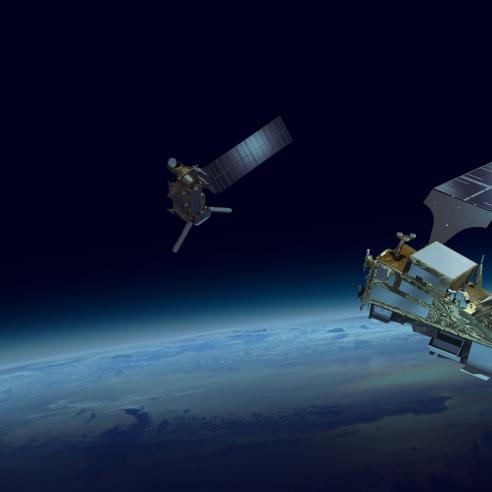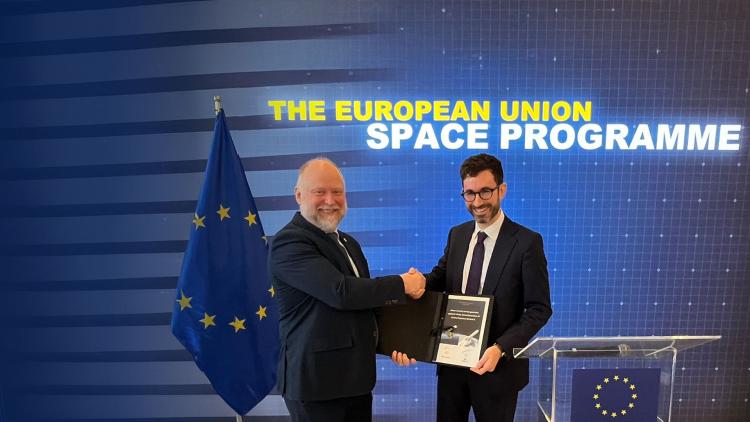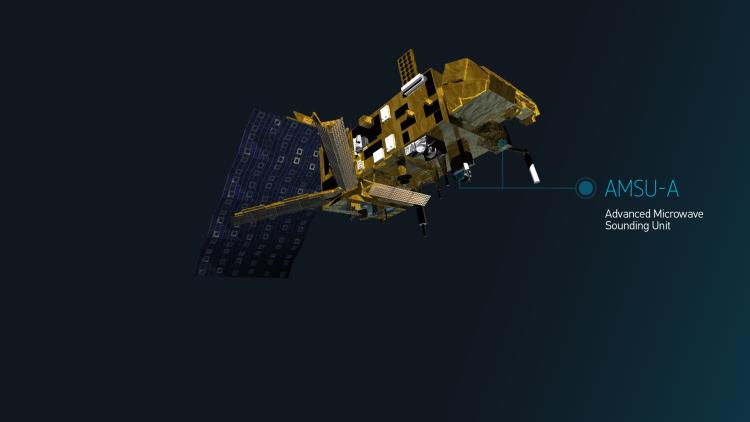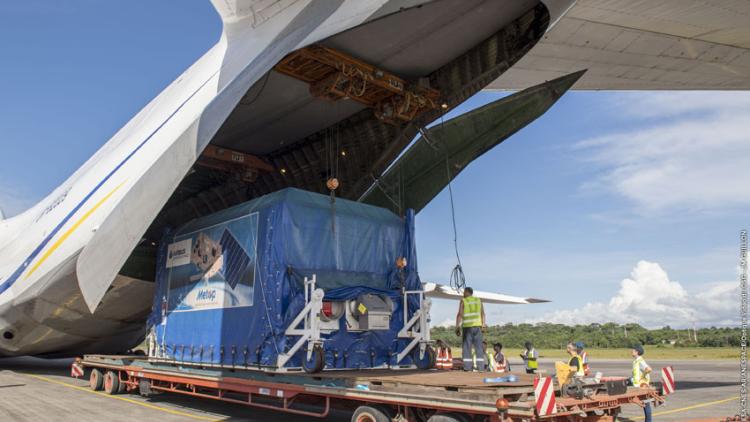09 December 2024
16 October 2023
EUMETSAT offers data users various options for accessing the data, as well as access to test data that support specialists in preparing for the bounties of data that will be available when the spacecraft become operational.
Data access services
Observation data will be acquired and processed within the EUMETSAT Polar System – Second Generation system.
To distribute this data to end-users, several operational data delivery services have been defined.
Global data service
The Metop-SG global data service will provide instrument data to users in near-real time.
Data will be acquired and processed by the system’s ground segment to provide datasets that are geometrically consistent and with calibrated radiance values. Many critical geophysical variables will be provided with coverage at a global level.
Processed data will be transmitted to users primarily via the EUMETCast dissemination system. Meteorological data and products will also be sent and relayed via the World Meteorological Organization’s Global Telecommunications System and the Regional Meteorological Data Communication Network to national meteorological and hydrological services and the European Centre for Medium-Range Weather Forecasts.
The period between observation by instruments on board Metop-SG satellites and delivery of the data to the users, via EUMETCast, has a target timeliness of 70 minutes or better, depending on geographical location of the observations.
More information about this service can be found here.
Regional data service
Regional data services are provided by the EUMETSAT Advanced Retransmission Service (EARS), a network of advanced high-resolution picture transmission reception stations. Currently, EARS comprises 11 separate data services that aim to provide timely regional data from polar-orbiting satellites for weather forecasting purposes, where they are used in numerical weather prediction and nowcasting applications.
This is achieved through a network of direct broadcast stations receiving and processing the data and redistributing products in near-real time, currently covering the North Atlantic and European regions between 30° to 80°N and 65°W to 50°E.
Selected EARS direct broadcast stations sites will cover defined geographical areas of interest and complementary stations will be added where necessary. Data will be delivered to users within 30 minutes of sensing, making datasets suitable for short range regional numerical weather prediction models. Datasets will also support nowcasting applications in higher latitudes, where coverage from geostationary spacecraft is sparser.
Information on current EARS services can be found here.
Archive and retrieval
Metop-SG instrument data will be archived and be available for retrieval via the internet.
Direct data broadcast service
Instrument data will be broadcast in real-time by Metop-SG satellites to receiving stations in visibility of the satellite through direct broadcast. Transmission will be in X-band and, depending on local conditions, will allow reception via an antenna of approximately three metres and a user station. As processed data is available in near-real time, this makes it highly useful for short- and medium-range numerical weather prediction, as well as nowcasting applications.
Instrument calibration data and administration messages generated on board will also be transmitted to users as part of the direct broadcast data.
Further information can be found in the Space-to-Ground Interface Control Document for Metop-SG, which defines the radio frequency and encoding characteristics of the satellite direct broadcast downlink, and the EPS-SG Local Mission Chain - Hosting Environment Document, which aids local users in determining the hardware specifications and interfaces for the various elements of the local processing chain.
User test data
Supporting users in preparations for receiving and processing EUMETSAT Polar System – Second Generation (EPS-SG) data.
Test data are essential for helping users to carry out system testing, for the development of processing software, and to enable data users to maximise the potential social, environmental, and scientific benefits of observations.
For users to prepare for EPS-SG, format familiarisation test data packages have been prepared. A product format specification document describing the content of each product is also released with each test data package. Test data for several observation missions are now available.
Products
All EUMETSAT Polar System – Second Generation (EPS-SG) global and regional Level 1 and Level 2 products generated at EUMETSAT headquarters are shown here.
Products are generated centrally at EUMETSAT, with some developed and validated within the EUMETSAT Satellite Application Facility (SAF) network and by the European Space Agency.
For EPS-SG products generated by the SAF network, see EPS-SG higher-level online products to be generated within the EUMETSAT SAF network and EPS-SG higher-level offline products to be generated within the EUMETSAT SAF network.
